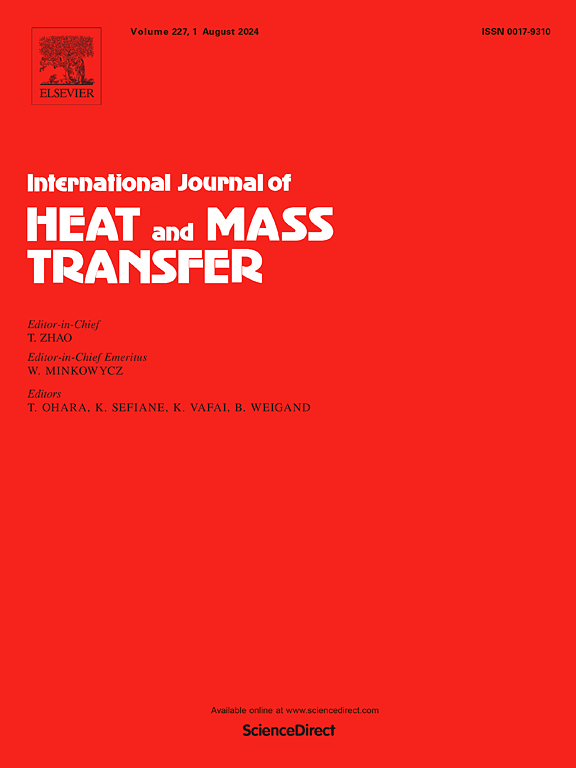Investigation in cooling performance and structural optimization for typical fractal units in turbine blades
IF 5
2区 工程技术
Q1 ENGINEERING, MECHANICAL
International Journal of Heat and Mass Transfer
Pub Date : 2025-02-21
DOI:10.1016/j.ijheatmasstransfer.2025.126855
引用次数: 0
Abstract
Fractal structures exhibit remarkable integrated performance due to their extremely high surface-to-volume ratio and adaptability. However, the exceedingly high degree of freedom in fractal designs introduces numerous geometric control variables, thereby complicating topological optimization. This study proposes a novel construction method for fractal structures and conducts flow and heat transfer analyses on various topological configurations of fractal units. Furthermore, intelligent algorithms are employed to perform topological optimization on typical fractal units. The results indicate that the performance of fractal units is predominantly influenced by bifurcation parameters and flow channel numbers. The heat transfer efficiency and pressure drop of fractal units increase with higher bifurcation numbers and angles. Meanwhile, the convergence of multiple fluid streams within the channels leads to significant pressure losses. An increase in flow channel numbers can enhance heat transfer while reducing pressure loss. Although increasing the complexity of the fractal topology improves heat transfer performance, this enhancement is insufficient to offset the adverse effects of increased pressure loss. Optimization using genetic algorithms yielded representative optimal structures which, under identical heat transfer performance, exhibited only 58 % of the original pressure drop. This finding indicates that employing intelligent algorithms is effective for achieving efficient topological optimization of fractal structures.
求助全文
约1分钟内获得全文
求助全文
来源期刊
CiteScore
10.30
自引率
13.50%
发文量
1319
审稿时长
41 days
期刊介绍:
International Journal of Heat and Mass Transfer is the vehicle for the exchange of basic ideas in heat and mass transfer between research workers and engineers throughout the world. It focuses on both analytical and experimental research, with an emphasis on contributions which increase the basic understanding of transfer processes and their application to engineering problems.
Topics include:
-New methods of measuring and/or correlating transport-property data
-Energy engineering
-Environmental applications of heat and/or mass transfer

 求助内容:
求助内容: 应助结果提醒方式:
应助结果提醒方式:


